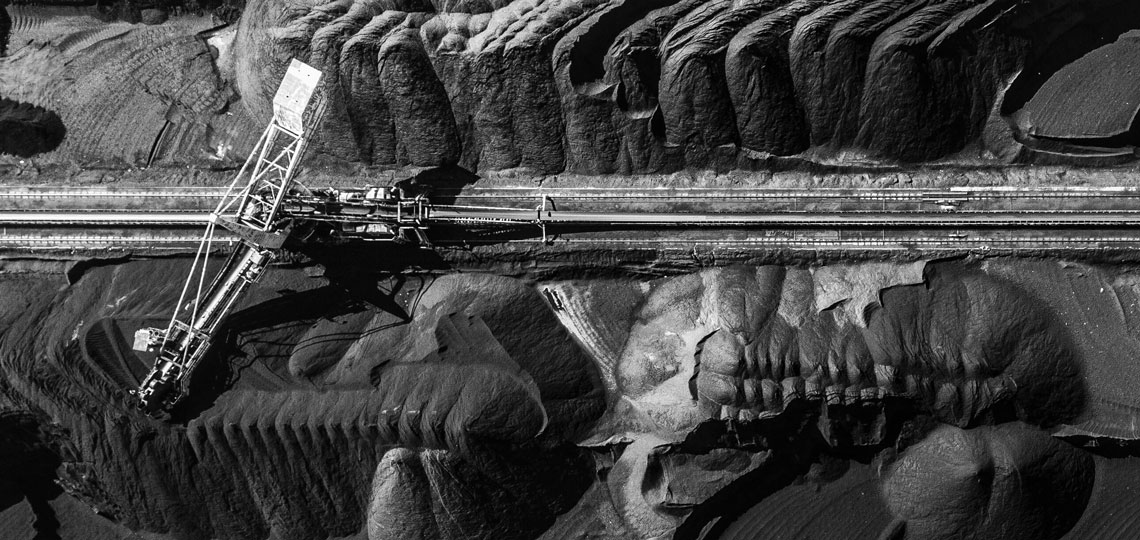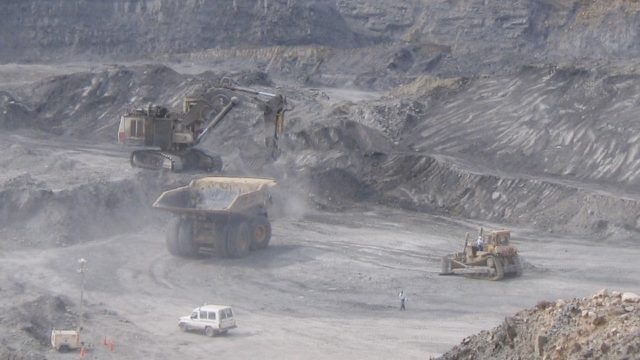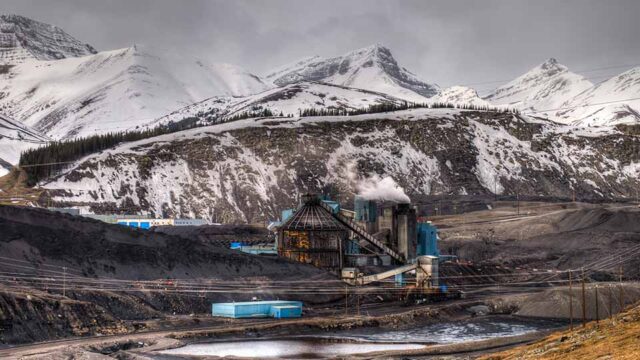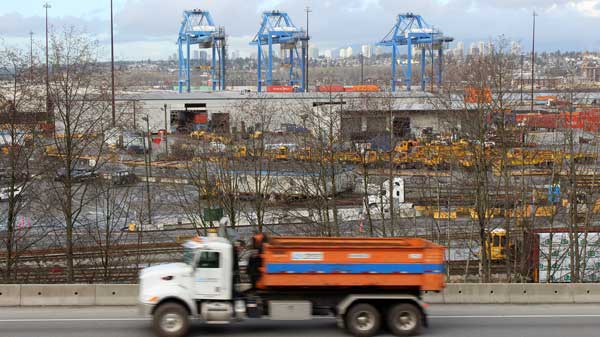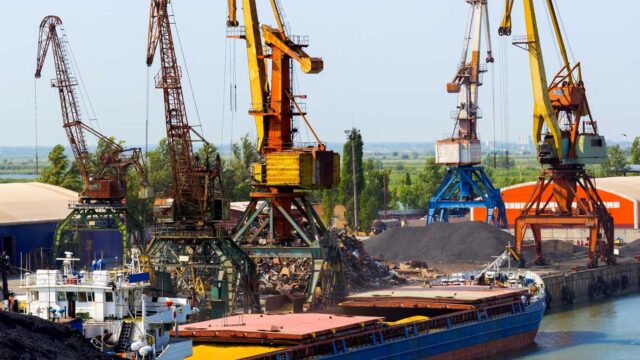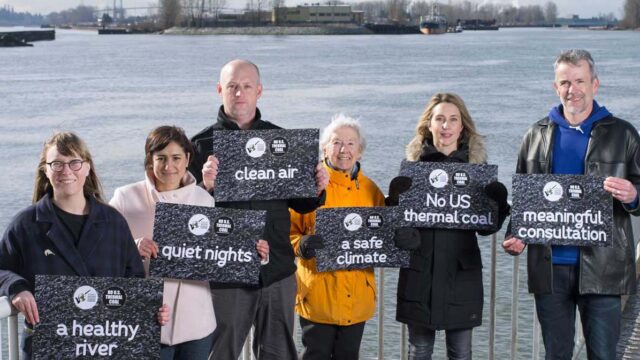Last month at the COP26 summit in Scotland, the world was confronted with the stark reality that not enough is being done to curb the climate emergency. We need to do more, and we need to do it immediately. This may seem like a daunting task, recent progress in the fight against thermal coal shows that there is reason for hope.
With Canada on the verge of saying goodbye to the world’s dirtiest fossil fuel for good — a significant victory for the climate and our health — Ecojustice, our clients, and partners will continue the fight for a faster phase-out of thermal coal exports. But first, let’s take a moment to recap and celebrate the successes that have helped bring us as close as we are to defeating thermal coal in Canada.
From cheap energy source to planetary threat
Since the 18th century, thermal coal has served as a cheap source of energy around the world, but the harmful impacts of its use have long outweighed the benefits.
The largest single source of global carbon emissions, coal burning is a major contributor to the climate crisis. In addition, the entire thermal coal supply chain, from mining to conversion into energy, can lead to violations of indigenous and community rights and trigger a staggering number of related environmental problems, such as contamination of water sources, habitat loss and catastrophic tailings spills.
As if these environmental impacts were not bad enough, air pollution from thermal coal poses serious risks to human health, contributing to diseases such as emphysema, chronic bronchitis, pulmonary inflammation, cancer, and heart attacks. Around the world, thermal coal burning is responsible for more than 800,000 premature deaths each year.
How Ecojustice has helped Canada phase out thermal coal
Backed by our supporters, we have been working since 2014 to keep coal where it belongs – in the ground and out of the atmosphere. Here is a rundown of how the Ecojustice-led legal battles have played a crucial role in pushing Canada to abandon coal:
- Putting the brakes on expanding Canada’s coal exports through Canadian ports
On behalf of two citizens and the grassroots groups Communities and Coal and Voters Taking Action on Climate Change, we launched a case against the Fraser Surrey Docks expansion in September 2014. The project aimed to transport up to four to eight million tonnes of U.S. thermal coal by open-car rail through Vancouver’s Lower Mainland each year, threatening the climate and the health and safety of communities in its way. Bound for export, that coal would have generated up to 14 million tonnes (MT) of CO2 emissions annually.After a pitched legal battle that lasted four-and-a-half years, the Vancouver Fraser Port Authority canceled the permit for the project. This case was one of the first opportunities Ecojustice had to directly challenge a project on its climate impacts.Learn more about the Fraser Surrey Docks case. - Ensuring scrutiny of the Vista coal mine
If built, the Vista coal mine expansion could make Vista the largest coal mine in Canadian history and result in the annual extraction of up to 15 MT of thermal coal, which, once shipped and consumed abroad, could release up to 33 MT of CO2 emissions. That’s why Ecojustice, on behalf of Keepers of the Water, Keepers of the Athabasca, and the West Athabasca Bioregional Society — and with the help of 46 other environmental, Indigenous, health, civil society, and faith organizations, as well as tens of thousands of supporters like you who signed our petition — worked to convince then-Minister of Environment and Climate Change Jonathan Wilkinson to require the Vista coal mine expansion to be subject to a federal impact assessment.Now, Ecojustice continues to defend the designation of the Vista mine in court against numerous cases brought by Vista’s owners that attempt to quash the impact assessment requirement. - Stopping all new thermal coal mines
Less than a year after the Vista Mine was designated, and in response to pressure from Indigenous groups, environmentalists and Ecojustice, the federal government sounded a death knell for thermal coal mining by requiring all new thermal coal mine projects and expansions to existing mines to be subject to an impact assessment. Importantly they also , acknowledged, for the first time, that any new thermal coal mining, including the Vista mine expansion, would have “unacceptable environmental effects,” rendering future development proposals very unlikely. - Calling on Canada to ban thermal exports
After finalizing regulations to phase-out coal burning in Canada in 2018 and placing severe restrictions on new or expanded mines, the end of thermal coal in Canada appears imminent. However, the country still exports millions of tonnes of Canadian and American coal every year through its west coast ports. Thanks to more pressure from Ecojustice and our community of supporters, the newly-elected federal government has announced it will phase out coal exports by 2030.
The fight against thermal coal is not over yet
Despite the federal government’s promise to act by 2030, between 13 and 18 MT of coal are still exported through Canadian ports every year, releasing approximately 28 to 40 MT of carbon dioxide into our atmosphere when burned abroad. We are in a climate emergency and 2030 is too late. This massive amount of pollution severely inhibits our collective ability to meet the crucial goal of limiting global warming to 1.5C – a temperature increase that will already have devastating consequences for the planet.
In November 2021, along with several other environmental organizations, we delivered a petition signed by more than 30,000 people to the Prime Minister’s office demanding immediate action to phase out thermal coal exports by no later than 2023. Ecojustice will continue to fight until thermal coal is relegated to history books by pushing the government to adopt this more urgent timeline and to support potentially impacted workers through the upcoming energy transition.
Help push Canada to ban thermal coal once and for all
Want to join the fight against the world’s dirtiest fossil fuel? Here are several ways you can help:
- Sign our advocacy actions
Our action calling on the Canadian government to ban thermal coal once and for all is still going, and there are several other advocacy actions related to thermal coal, such as this one demanding political leadership on the environment, you can take. (If you are skeptical about signing online petitions, here’s more information on how petitions help advance causes.) - Make your voice heard
There are many ways concerned citizens can voice their opposition to thermal coal and demand action from the government, such as writing or calling the politicians in your region, attending protests, forming grassroots groups to organize action, and much more. Here’s an interesting example of what members of the Communities and Coal group did to advance the Fraser Surrey Docs case. - Donate
Each legal fight we take on requires hundreds of hours of work and organizational resources to secure the best possible outcome for the environment and our communities. The support of people like you ensures that we have the resources we need to sustain our efforts for as long as it takes to see things through. You can support us by giving a gift today or sharing information about this case with your family and friends.

